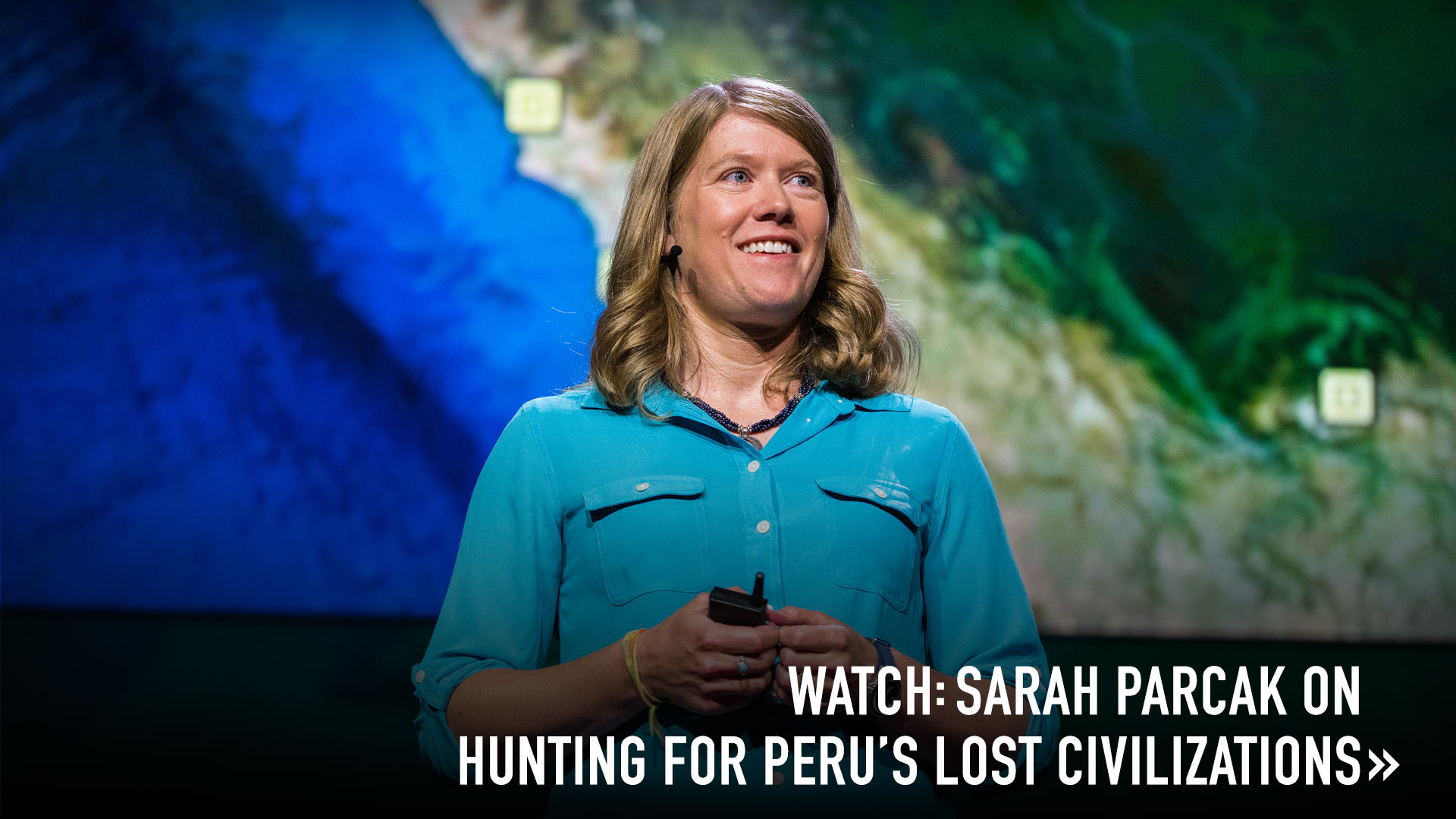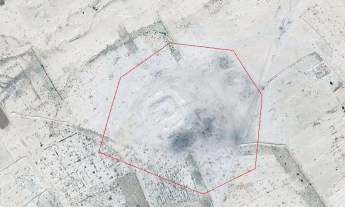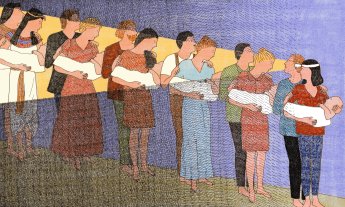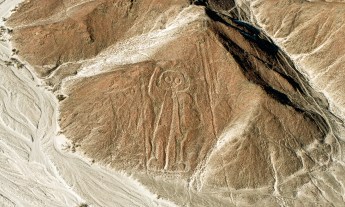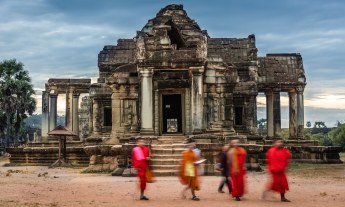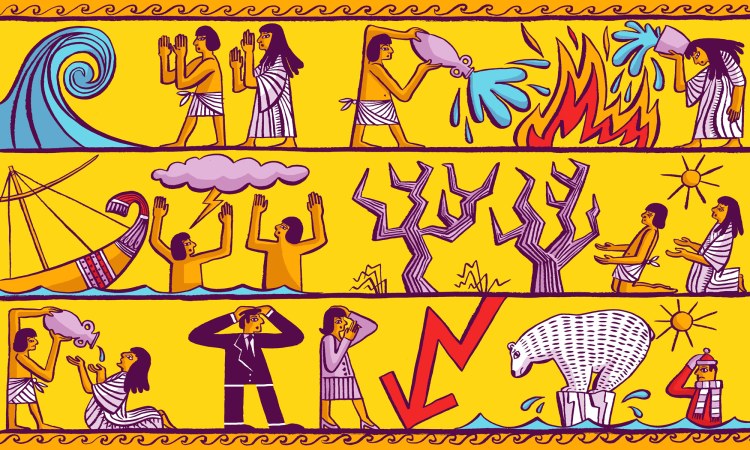
This year has been marked by upheaval on a global scale — and many of us are wondering: What will happen next? Satellite archaeologist and TED Prize winner Sarah Parcak shares three examples from the ancient past that offer lessons for today.
2016 has been a bruising year. We’ve had the highly contentious election in the US, the divisive Brexit vote in the UK, continuing destabilization and conflict across the Middle East, the panic of the refugee crisis, and the frightening spread of the Zika virus. Many of us are wondering: Where are we headed?
It turns out, humanity has seen similar inflection points before. The past has valuable lessons to teach us — all we need to do is take the time to listen to them. Below are three moments in ancient history when things teetered on the edge, along with what I think we can learn from them now.
2200 BC: Climate change can drive more than just shifts in the landscape
Starting around 2200 BC, many ancient civilizations — including early Bronze Age Greece, the Akkadian Empire, the Indus Valley Civilization and the Old Kingdom in Egypt — began to collapse. The CliffsNotes version of why this happened: weather patterns across the world had been thrown out of whack. The monsoon rainfall that usually cut across India in the summer and filled up the Nile River basins came to a virtual halt for a period of 50 to 100 years. Egypt, at this time, was already feeling political strife — so the drought was the tipping point. After an era of stable administrations, leaders came and went quickly, and power shifted from the capital at Memphis toward regional centers. Foreign expeditions halted, as did the construction of pyramids. Egypt entered what’s known as the First Intermediate Period, its version of the Dark Ages.
What can we learn from this moment in history? For one thing, we must recognize the role that climate change can play in causing instability. When there is a drastic shift in climate, harvests suffer and people go hungry, which often leads to unrest. As a result, conflict often follows climate change. I don’t think it’s a coincidence that a series of droughts preceded the Arab Spring and war in Syria. We know that our actions are affecting the scale and frequency of unpredictable weather events. I don’t think we’re prepared for the consequences.
1177 BC: Interconnectedness can have consequences that we may not be able to anticipate
During the Late Bronze Age, many cultures flourished around the Mediterranean. It was a period of great internationalization with the Egyptians, the Mycenaeans, the Hittites, the Babylonians, the Assyrians and many others living together in relative harmony, with brisk trade through the region. Then things ground to a rapid halt. In the book 1177 B.C., historian Eric H. Cline describes how a group called the “Sea Peoples” pushed across the Mediterranean and down the coastline of Canaan, taking out the Hittites and invading Egypt. They laid waste to city after city. In the ancient Syrian city of Ugarit, for example, archaeologists found a layer of rubble that was two meters deep — the city was never rebuilt, which means that the Sea Peoples might have killed everyone or taken them as slaves. Once again, climate change played a part in this story, as droughts and earthquakes had weakened the region to the point where inhabitants couldn’t withstand the battles with the Sea Peoples. But it was the interconnection of societies that led to such rapid collapse. As one culture toppled, it affected the others — and helped lead to their demise.
What can we learn here? Well, if the world was international back then, our interconnectedness now is unprecedented. A recent cyber attack on a single service provider in the US created international ripples by affecting websites that are used by people all over the planet, including Twitter, Paypal and Spotify. A global world is wonderful, but it also opens up unexpected vulnerabilities, many of which we don’t fully understand. I think of civilization as kind of like a game of Jenga; when you pull out a block, sometimes the other planks lend enough support to keep the basic structure intact; at other times, the tower topples. We need to understand how systems intersect to properly prepare for challenges.
343 BC: What’s new now has happened before (repeatedly)
343 BC was a tough year. The Persians were waging war across the Mediterranean, and many groups — including the Egyptians — were taking on the well-oiled Persian military machine while also dealing with political and economic instability. As the legends tell us, the Persian King Artaxerxes III sailed down the Nile, ransacking cities and torching the idols in the temples. I was part of an archaeological team that found evidence of his destruction at the site of Tell Tebilla in the Egyptian delta. We scanned high-resolution photography of the site, located ancient temple enclosure walls and then excavated one corner. As we dug, we came to a dense, brick-like substance. But as we continued, the material began to look different, as if it were the remains of a pile of stuff that had been set on fire. We sieved everything, and we found beads, bronze fittings, pieces of gold leaf and fragments of lapis and other semi-precious stones. The temple idols had been made of wood, which would not have survived burning, but they were gilded and had beards, crowns, eyebrows and other facial features made of inlaid bronze and stones. We theorize that the Persians ripped out all the idols in the temple, threw them in the corner, and set them ablaze. A 2,300-year-old act of war, readable in the archaeological record.
What does that have to do with us today? Quite a bit. Many people forget that the region encompassing the Middle East and North Africa has been in flux for thousands of years. Peace has been tenuous for a long time, and the numerous rises and falls of nations in that area are part of a larger and continuing arc in history.
I’m not suggesting that there can never be peace in the Middle East, or that interconnectedness always leads to collapse, or that we’re at the mercy of the climate. The past does not determine the future. But in studying archaeology, we can see a bigger picture of humanity’s incredible resilience through the ages. Even after periods of instability, we recover and rebound. Right now I’m working at the Egyptian site of Lisht, which was established during the Middle Kingdom — ancient Egypt’s renaissance. Out of the great disaster of the First Intermediate Period came exquisite art, music and sculpture.
My mission is to help people to connect with the past. I believe this can cut through the divisiveness of this moment and help us realize that we are all a part of the grand human journey. Some threats are unpredictable; with others, if we can be honest about the dangers facing us, we can rise to the challenge together.
With the 2016 TED Prize, Sarah Parcak has built a citizen science platform for archaeology, called GlobalXplorer.org, that invites the world to help locate and protect ancient sites. DigitalGlobe has provided satellite imagery; National Geographic Society has contributed rich content and exploration support; and you’ll provide the analytical power.

